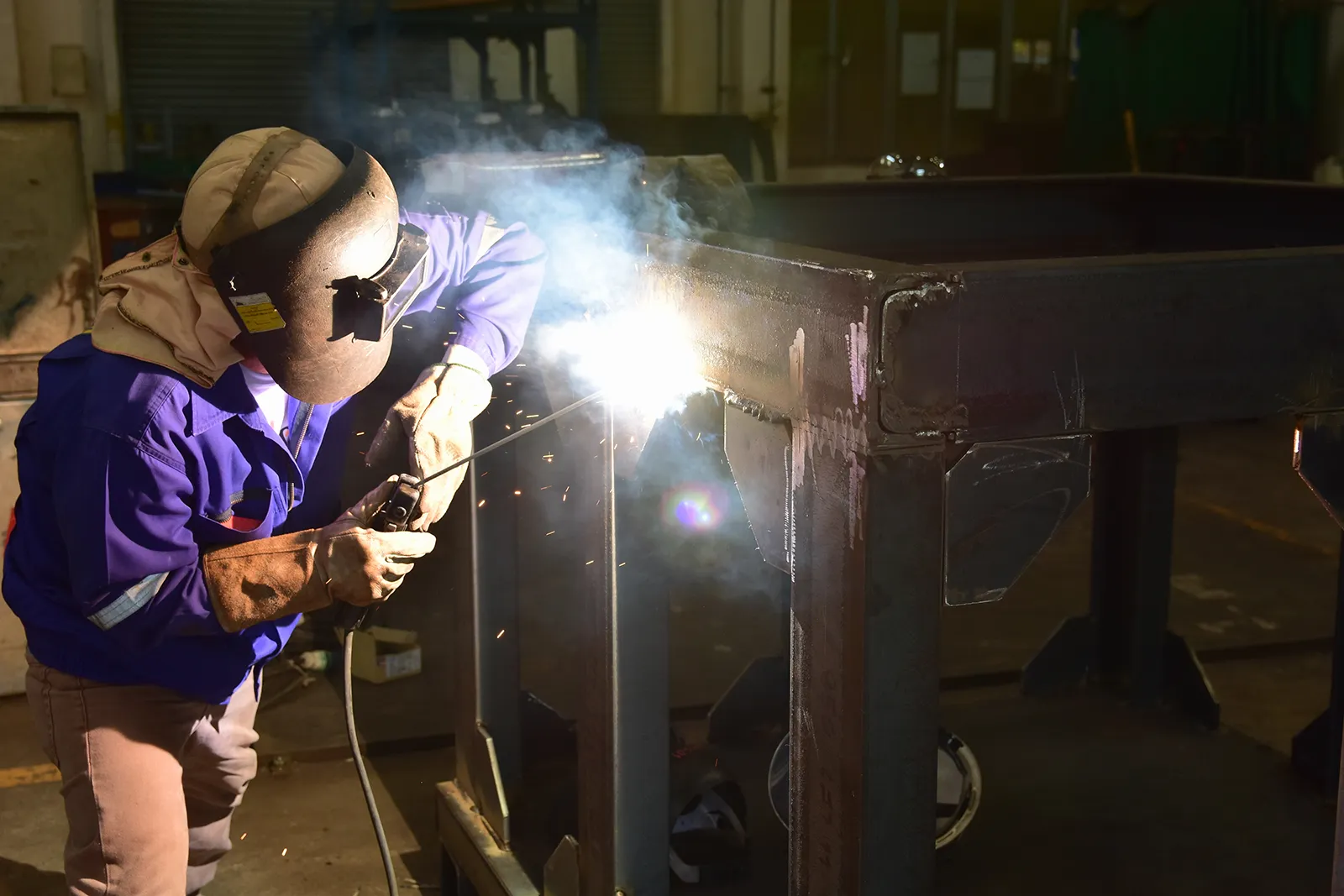Lassen is een cruciaal proces in de productie en bouw, maar het gaat gepaard met de nodige uitdagingen. Dit artikel onderzoekt de meest voorkomende lasproblemen en biedt praktische oplossingen om ze op te lossen, zodat lassen van hoge kwaliteit en efficiënte werkzaamheden gegarandeerd zijn.
1. Poreusheid
Probleem: Poreusheid in lasnaden verschijnt als kleine gaatjes of holtes veroorzaakt door ingesloten gasbellen in het gesmolten metaal. Het verzwakt de las, waardoor deze vatbaar wordt voor barsten en corrosie.
Oplossing:
- Schoon basismetaal: Zorg ervoor dat het basismetaal schoon is en vrij van verontreinigingen zoals olie, roest en vocht voordat je gaat lassen.
- Juiste afscherming: Gebruik de juiste beschermgassen (bijv. argon, CO2) en zorg voor de juiste stroomsnelheid om het lasbad te beschermen tegen atmosferische gassen.
- Elektrode opslag: Bewaar elektroden in een droge omgeving om absorptie van vocht te voorkomen, wat kan leiden tot door waterstof veroorzaakte porositeit.
2. Kraken
Probleem: Scheuren kunnen ontstaan tijdens het lassen door hoge niveaus van restspanning, snelle afkoelsnelheden of onjuist verbindingsontwerp.
Oplossing:
- Voorverwarmen en warmtebehandeling na het lassen (PWHT): Het voorverwarmen van het basismetaal en het toepassen van gecontroleerde verwarming of gloeien na het lassen vermindert spanning en minimaliseert scheurvorming.
- Juist lasontwerp: Zorg ervoor dat de verbindingen zijn ontworpen met de juiste afmetingen en lastechnieken om de spanning gelijkmatig te verdelen.
- Materiaalkeuze: Gebruik vulmetalen en basismetalen die qua samenstelling en mechanische eigenschappen compatibel zijn om de gevoeligheid voor scheuren te verminderen.
3. Gebrek aan fusie of onvolledige penetratie
Probleem: Onvoldoende versmelting of inbranding resulteert in zwakke lasverbindingen, waardoor de structurele integriteit in gevaar komt.
Oplossing:
- Juiste lastechniek: Houd de juiste booglengte, bewegingssnelheid en elektrodehoek aan om voldoende versmelting en penetratie te bereiken.
- Gezamenlijke voorbereiding: Zorg ervoor dat de randen goed afgeschuind en gereinigd zijn om voldoende laspenetratie mogelijk te maken.
- Stroomsterkte aanpassen: Stel de lasparameters, zoals stroomsterkte en spanning, af op de dikte en het type materiaal dat wordt gelast.
4. Lasspatten
Probleem: Lasspatten bestaan uit ongewenste stukjes gesmolten metaal die zich kunnen hechten aan omringende oppervlakken, wat leidt tot extra schoonmaakwerk en mogelijke verontreiniging.
Oplossing:
- Juiste spanning en draadaanvoersnelheid: Pas de lasparameters aan om spatvorming te minimaliseren. Gebruik lagere spanningen en geschikte draadaanvoersnelheden.
- Oplossingen tegen spatten: Breng antispatspray of -gel aan op oppervlakken in de buurt van de lasnaad om te voorkomen dat spatten zich hechten.
- Apparatuur onderhouden: Reinig en onderhoud lasapparatuur regelmatig, inclusief mondstukken, tips en voeringen, om spatten te verminderen.
5. Vervorming
Probleem: Door het lassen veroorzaakte vervorming verandert de vorm en de afmetingen van gelaste onderdelen en beïnvloedt de passing en uitlijning.
Oplossing:
- Opspannen en klemmen: Gebruik opspanmiddelen en klemmen om werkstukken op hun plaats te houden en beweging tijdens het lassen tot een minimum te beperken.
- Sequentieel lassen: Gebruik een lasvolgorde die de thermische krimp in evenwicht houdt om vervorming te minimaliseren.
- Terugspoelen: Gebruik in toepassingen waar vervorming kritisch is, terugspoeltechnieken om gelijkmatige koelsnelheden te behouden en kromtrekken te verminderen.
Conclusie
Het aanpakken van veelvoorkomende lasproblemen vereist een combinatie van technische expertise, zorgvuldige voorbereiding en het naleven van best practices. Door de hoofdoorzaken van problemen zoals poreusheid, scheuren, gebrek aan smelting, spatten en vervorming te begrijpen, kunnen lassers effectieve oplossingen implementeren om lassen van hoge kwaliteit te maken en de productie-efficiëntie te optimaliseren. Voortdurende training, onderhoud van de apparatuur en de juiste materiaalbehandeling zijn essentieel voor het beperken van lasuitdagingen en het garanderen van consistente, betrouwbare resultaten. Het toepassen van deze oplossingen verbetert niet alleen de laskwaliteit, maar draagt ook bij aan de algehele operationele efficiëntie en klanttevredenheid in verschillende industriële sectoren.

